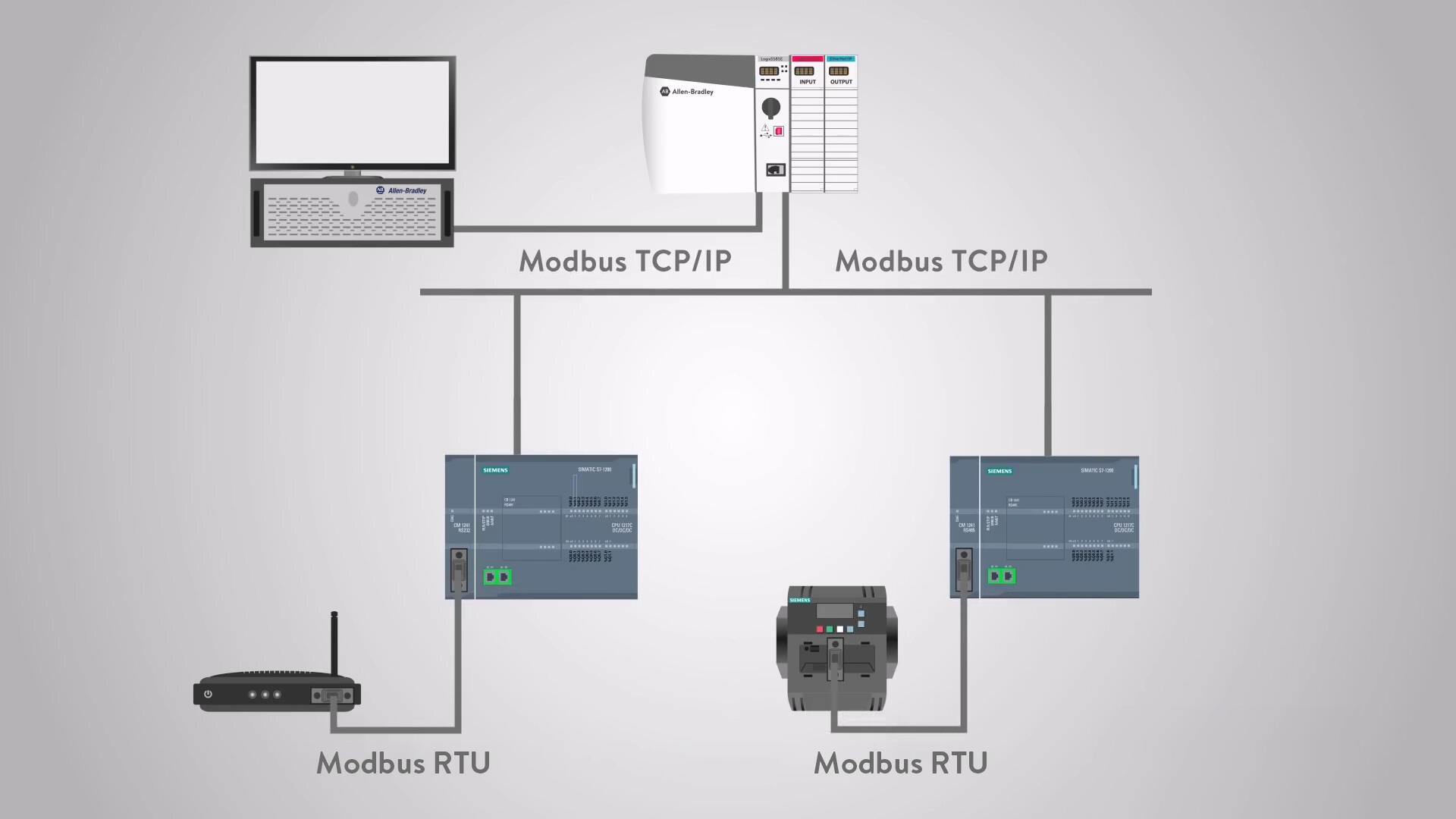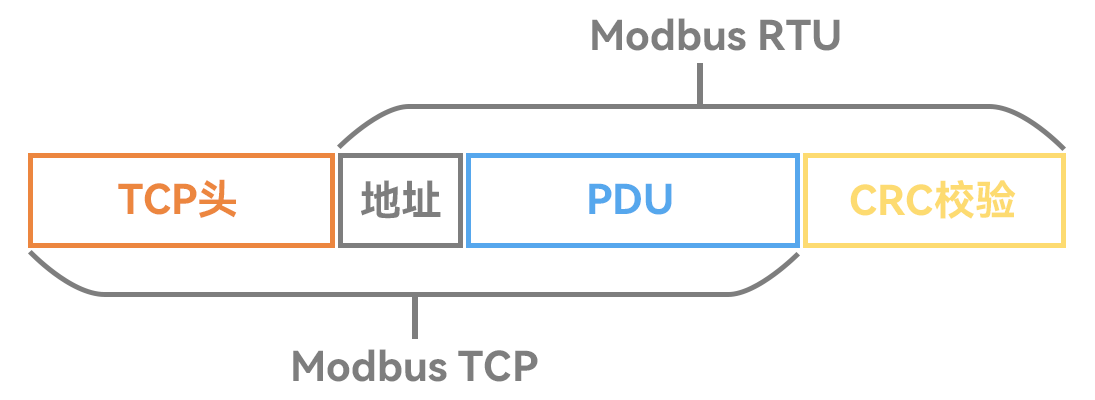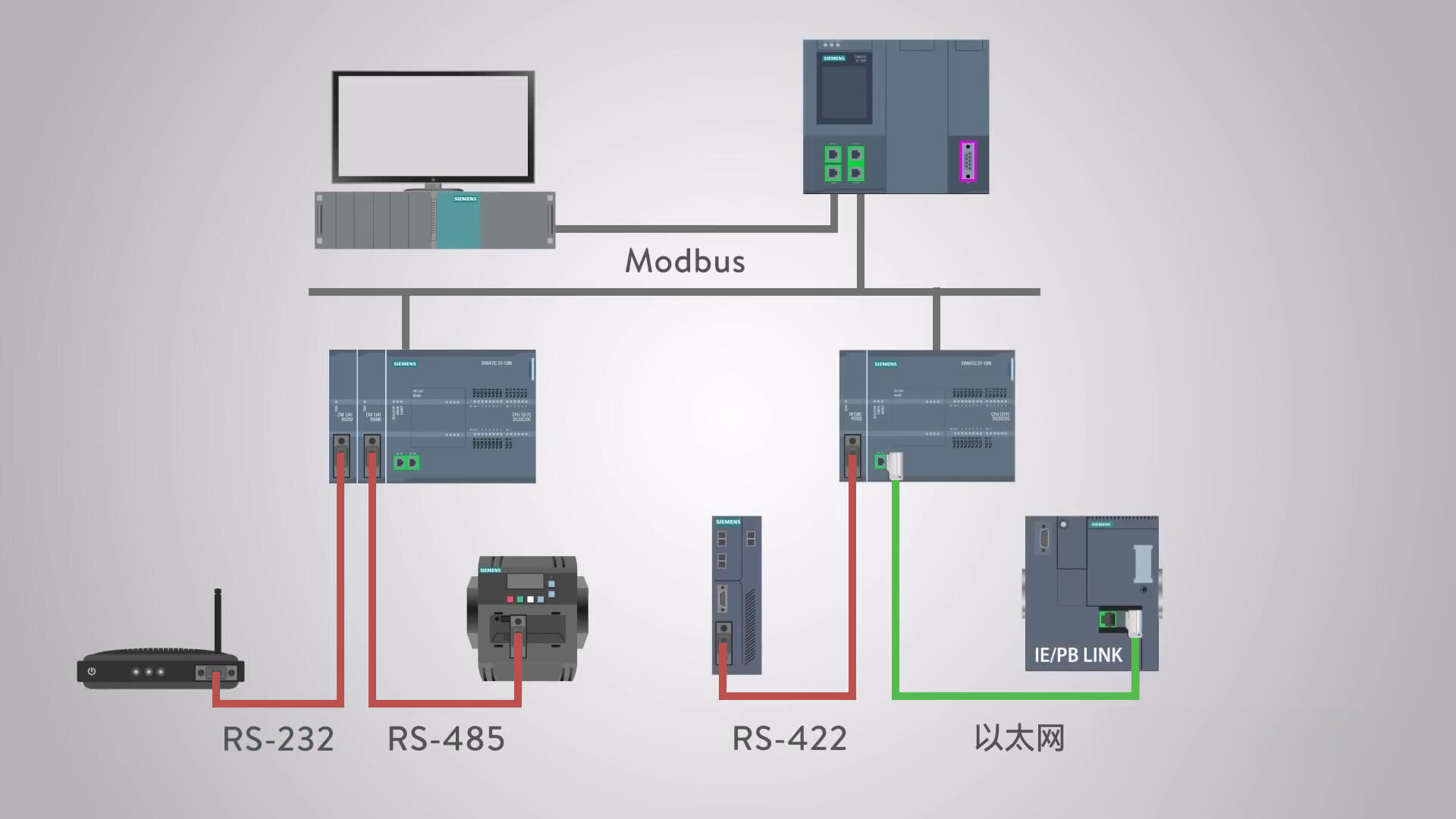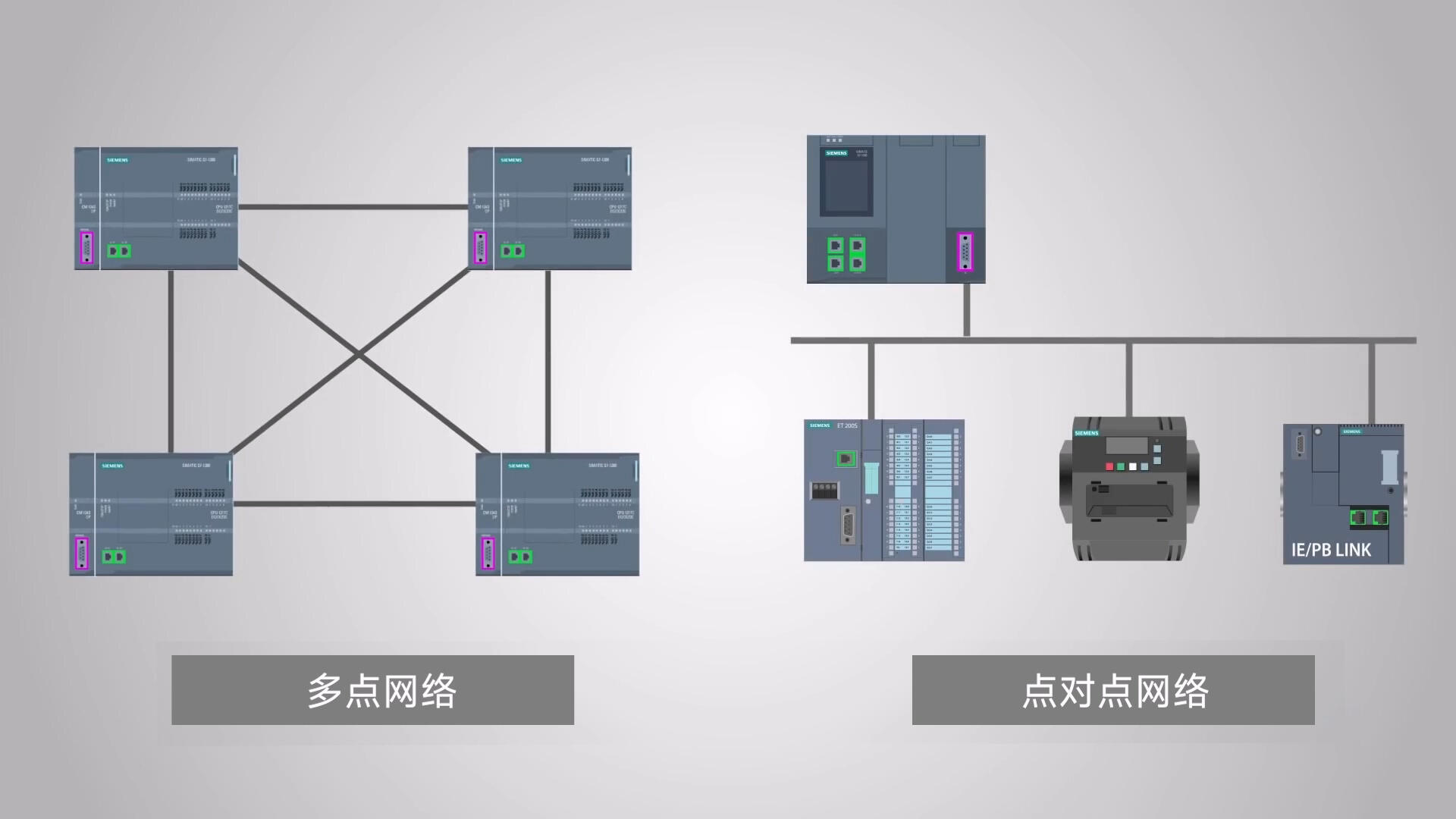In the field of industrial automation, data transmission between devices is crucial, and the Modbus protocol, as a communication standard, is widely used in various automation systems. There are two common variants of the Modbus protocol: Modbus RTU and Modbus TCP. The following article will explore the differences between the Modbus RTU and Modbus TCP protocols in detail.
1. Physical layer
Modbus RTU adopts a serial communication method and uses an RS-232 or RS-485 interface for data transmission. It uses binary encoding to achieve communication. In contrast, Modbus TCP uses Ethernet-based communication and uses the TCP/IP protocol stack to transmit data on the network.

2. Структура рамы
Modbus RTU использует компактный двоичный формат для инкапсуляции кадров данных. Каждый кадр данных содержит такие поля, как адрес ведомого устройства, код функции, данные и проверка на наличие ошибок. Modbus TCP использует структуру сообщений на базе TCP/IP для инкапсуляции кадров данных Modbus в сообщения TCP и последующей передачи их через IP-сеть.

3.Скорость передачи
Поскольку Modbus RTU основан на последовательном обмене данными, скорость его передачи ограничена производительностью последовательного интерфейса. Как правило, скорость передачи данных Modbus RTU невелика и составляет от нескольких тысяч бит в секунду (bps) до десятков килобит в секунду (kbps). В отличие от этого, Modbus TCP использует Ethernet в качестве физической среды и поддерживает более высокие скорости передачи, которые могут достигать стандартных скоростей Ethernet, таких как 10 Мбит/с, 100 Мбит/с или 1 Гбит/с.

4.Метод подключения
Modbus RTU adopts a point-to-point connection method, which is a one-to-one communication mode. A master station can connect to multiple slave stations, but can only communicate with one slave station at a time. In contrast, Modbus TCP uses an IP-based client-server model and supports many-to-many connections. Multiple clients can communicate with one Modbus TCP server at the same time.

5. Сетевые зависимости
Modbus RTU does not rely on network infrastructure, can communicate over a simple serial connection, and is suitable for relatively small local area networks. Modbus TCP relies on the TCP/IP network, requires reliable network infrastructure support, and is suitable for larger-scale distributed systems.
6. Security of Modbus RTU and Modbus TCP
The security is vary between Modbus RTU and Modbus TCP protocols. Modbus RTU does not have a built-in security mechanism, and communication data is not encrypted, so it is vulnerable to security threats. Modbus TCP can take advantage of TCP/IP security features, such as encryption and authentication, to provide higher security.
Подведите итоги
To sum up, Modbus RTU and Modbus TCP have significant differences in many aspects. The choice of which protocol to use depends on the specific application requirements and network environment. If it is simple point-to-point communication or a smaller-scale system, Modbus RTU may be more suitable. And for distributed systems or environments that require high-speed transmission, Modbus TCP is a better choice. In practical applications, choosing the appropriate protocol according to system requirements and network conditions can ensure the stability, security and performance of communication.


